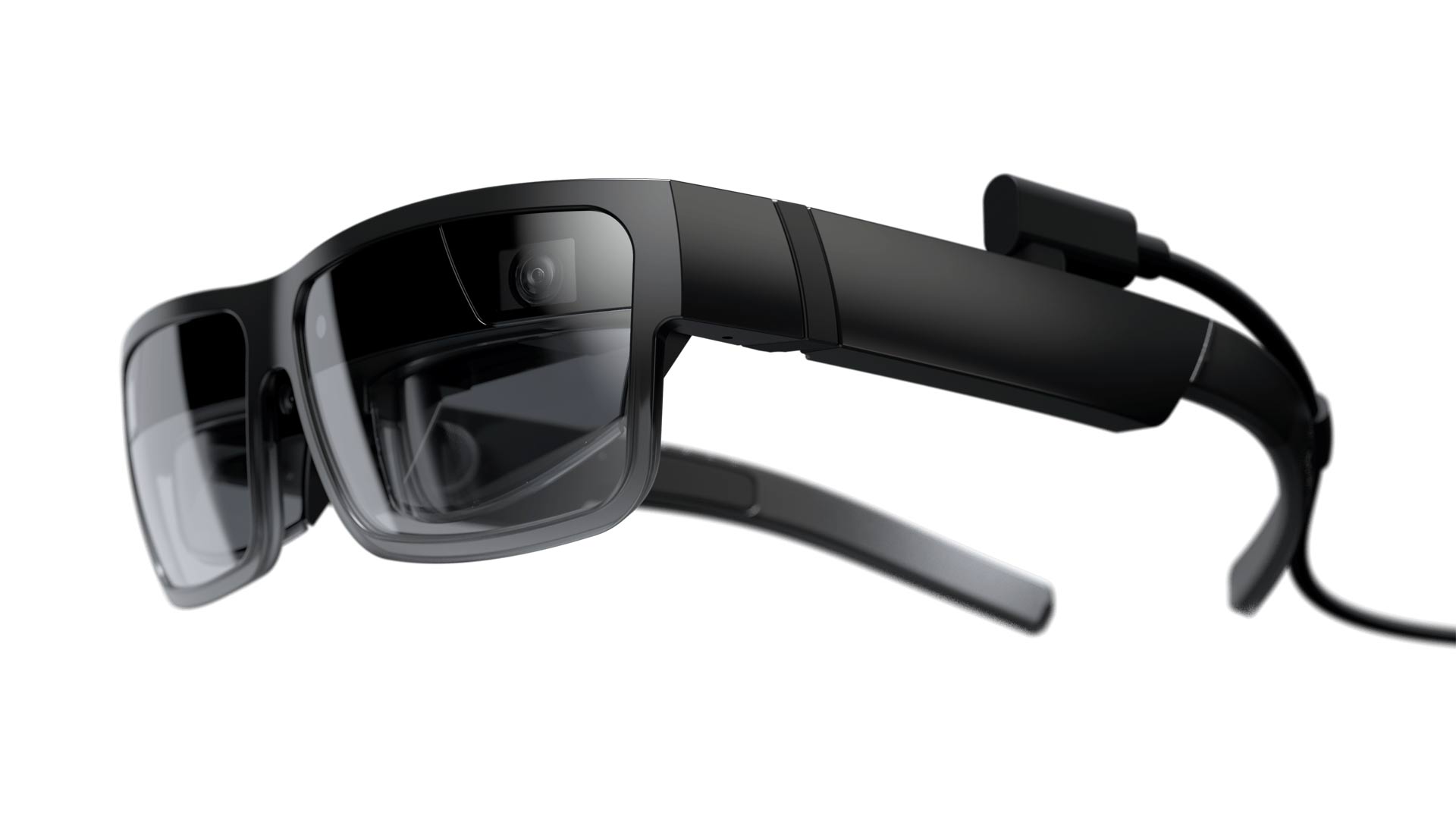During the all-digital version of CES 2021 this year, Lenovo has officially unveiled its ThinkReality A3 augmented reality glasses, which is said to work with PC and select Motorola smartphones via a USB-C cable.
We first got an unofficial glimpse of the AR glasses in mid-December when leaker ‘WalkingCat’ published a number of unverified photos of the headset. Now the company has detailed a few of the things that were previously only subject to speculation.
In short: the company is putting out a lighter, more ergonomic pair of AR glasses for business users sometime in mid-2021. Lenovo says use cases for ThinkReality A3 include using virtual monitors, viewing 3D objects, and immersive training.

The AR glasses are powered by a Qualcomm Snapdragon XR1 which drives stereoscopic 1080p displays, something the company says can show “up to 5 virtual displays” for greater and work productivity and for situations when users need private access to displays. A single 8MP RGB camera provides 1080p video for remote expert training, and dual fisheye cameras provide room-scale tracking.
It’s being offered in two varieties, a ‘PC Edition’ and an ‘Industrial Edition’, the latter of which includes more durable industrial frame options.
Lenovo confusingly calls the device ‘smart glasses’ in promotional material, however since it features room-scale tracking and immersive displays, it’s decidedly more on the augmented reality end of the spectrum. Find out where the confusion lies in our breakdown of smartglasses and AR headsets.
As for device compatibility, Lenovo says its virtual displays are “optimized and compatible with Lenovo’s leading ThinkPad laptops and mobile workstations powered by Intel and AMD Ryzen processors.” The company further says ThinkReality A3 shares compatibility with Motorola smartphones using a Qualcomm Snapdragon 800 series processor or better, and DisplayPort capability.
Although we previously speculated that the new ThinkReality A3 included waveguide-based optics, the company confirmed with Road to VR that they are indeed birdbath-style optics similar to those seen in Nreal Light. Birdbath optics include spherical mirror/combiners that are typically much cheaper to manufacture than waveguides, but are also less bright.
The enterprise-focused device doesn’t have a price tag yet, however Lenovo says ThinkReality A3 will be available in select markets worldwide starting mid-2021, so we may learn more soon in the next few months.







